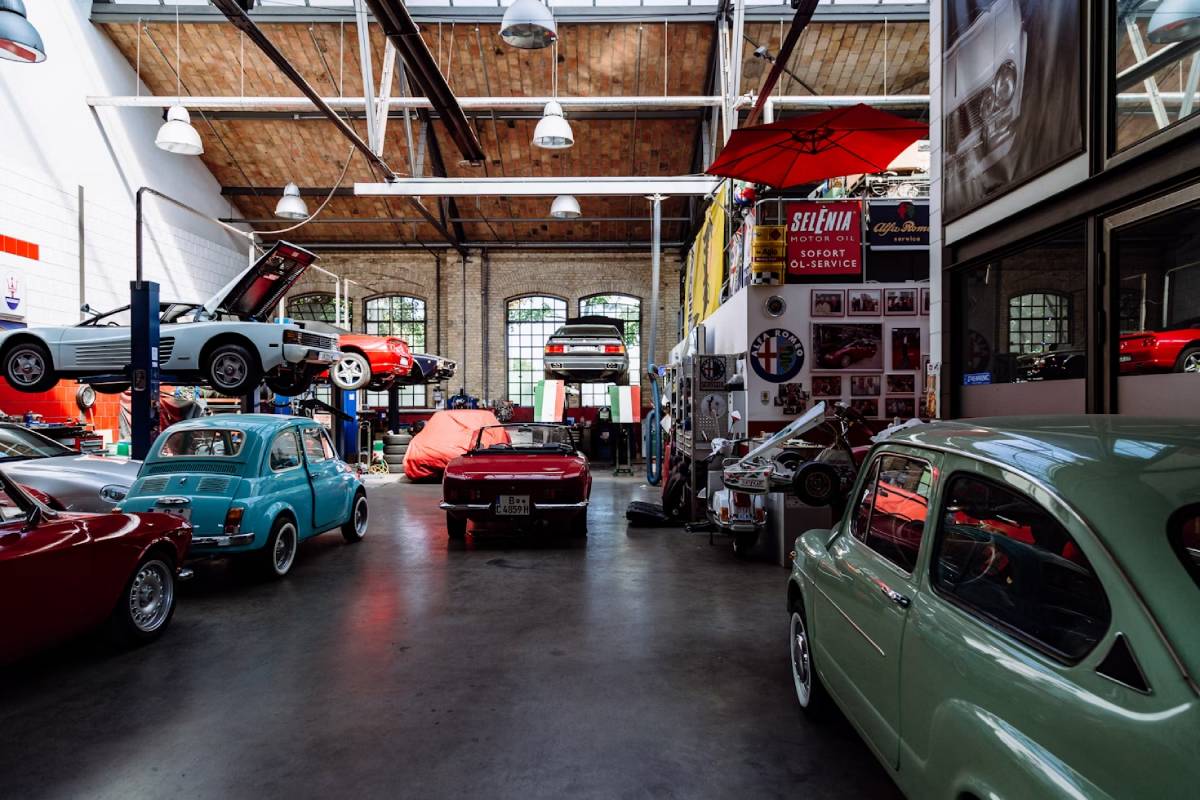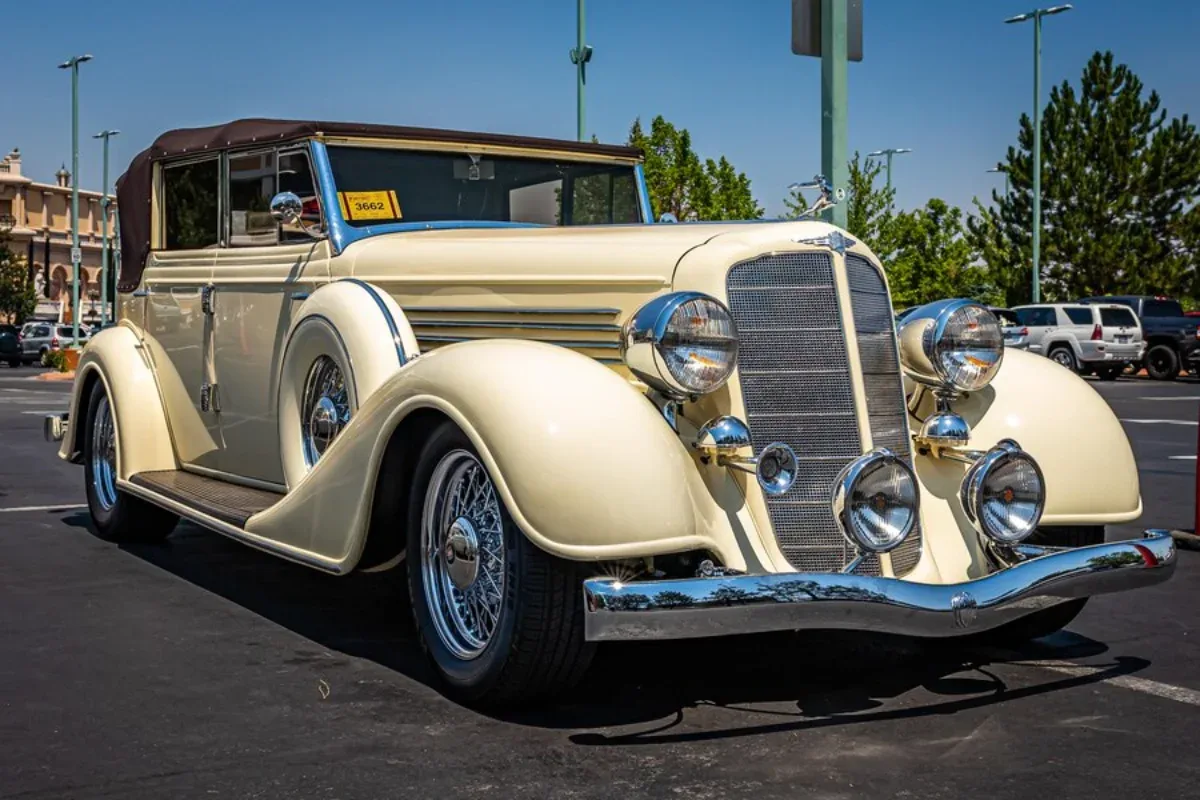
Indoor vs. Outdoor Storage: Best Practices for Classic Cars
Owning a classic car is a rewarding experience — one that often comes with pride, nostalgia, and a strong sense of personal connection. But whether it’s a weekend cruiser or a rare collector’s item, your car needs the right environment to stay in top shape. One of the most important decisions you’ll make is how and where to store it.
When it comes to classic car storage, there’s no one-size-fits-all answer. Both indoor and outdoor storage have pros and cons, and your choice can affect everything from your car’s appearance to its long-term value. In this guide, we’ll explore best practices for both options and share important car maintenance tips to help you keep your classic vehicle preserved and protected all year round.
Why Proper Storage Matters for Classic Cars
Unlike modern cars built to handle daily wear and tear, vintage vehicles need extra care. They often have older materials — paint, seals, upholstery, and electronics — that can be more vulnerable to moisture, UV exposure, dust, and temperature changes.
Poor storage can lead to:
- Paint fading or peeling
- Rust and corrosion
- Flat spots on tyres
- Mold or mildew in the interior
- Battery drainage
- Rodent or insect damage
Protecting your car properly helps maintain its value, appearance, and performance. It also reduces the chances of expensive repairs down the road — a win-win for any collector.

Indoor Classic Car Storage: The Gold Standard
If you have the option, indoor storage is usually the best choice for vehicle preservation. Keeping your car in a garage, workshop, or climate-controlled facility offers the highest level of protection.
Benefits of indoor storage:
- Shield from the elements: No rain, snow, hail, or sun exposure
- Controlled temperature and humidity: Reduces condensation and rust risk
- Better security: Locked garages are less likely to attract theft or vandalism
- Less dust and debris: Cleaner environment for both the exterior and interior
Ideal conditions for indoor storage:
- Temperature: Between 50°F and 70°F
- Humidity: 40%–60% is optimal to prevent moisture build-up or material drying
- Lighting: Low or no direct sunlight to prevent fading
If you’re using a private garage, adding a dehumidifier or fan for airflow can greatly improve the environment. And remember to check for small entry points — rodents can squeeze through tiny gaps.

Outdoor Classic Car Storage: What to Know
Sometimes, indoor space just isn’t available. In that case, outdoor storage can work, but it requires more effort and caution.
Risks of outdoor storage:
- Weather damage: Rain, snow, and sun can quickly wear down paint and rubber parts
- UV exposure: Prolonged sun can fade upholstery and cause cracking in dashboards
- Moisture: Trapped moisture can cause rust and mildew
- Pest threats: More likely to encounter rodents, birds, or insects
How to protect a car stored outside:
- Use a high-quality car cover: Choose one made for outdoor use — it should be breathable, waterproof, and UV-resistant.
- Elevate tyres or use wheel cradles: Prevent flat spots if the car sits for months at a time.
- Park on a solid surface: Concrete or asphalt is better than grass or dirt, which can retain moisture and speed up corrosion underneath the car.
- Add undercarriage protection: Spray a rust inhibitor or apply a protective coating before long-term storage.
- Check the cover regularly: Even a great cover can shift, rip, or trap moisture — especially during storms or wind.
With the right precautions, outdoor storage can be a temporary solution — just know that it’s not ideal for long-term vehicle preservation.
Seasonal vs. Long-Term Storage
Whether you’re tucking your classic car away for winter or storing it for several years, your approach may vary.
Short-term or seasonal storage tips:
- Fill the gas tank and add a fuel stabiliser
- Inflate tyres to the recommended PSI
- Wash and wax the car to protect the paint
- Disconnect or maintain the battery (a trickle charger is ideal)
Long-term storage tips:
- Drain or replace old fluids (coolant, oil, brake fluid)
- Consider removing the battery completely
- Plug exhaust and air intakes with steel wool or covers to block pests
- Place dryer sheets or mothballs inside the car to deter rodents
A quick monthly inspection — even during storage — can help you catch issues early, especially in outdoor setups.
Car Maintenance Tips Before and After Storage
Preparing your vehicle before storage is just one side of the equation. How you wake it back up matters too.
Before storage:
- Check for leaks
- Top off all fluids
- Run the engine for 10–15 minutes if possible
- Clean the interior to remove crumbs and dust
- Use a breathable cover (indoors) or a weather-resistant one (outdoors)
After storage:
- Remove the cover and check for signs of rust or pests
- Reconnect the battery and check the voltage
- Test lights, brakes, and tyre pressure
- Change the oil if it wasn’t done before storage
- Drive slowly at first to check how it handles
Starting with a short, slow drive gives you a feel for any issues that may have developed while the car was sitting.
Choosing the Right Storage Option
So, how do you decide between indoor and outdoor storage? Here’s a simple comparison:
| Storage Type | Pros | Cons |
|---|---|---|
| Indoor | Best protection, security, and climate control | Can be expensive or space-limited |
| Outdoor | Budget-friendly, flexible | Higher risk of weather damage and wear |
| Storage Facility | Clean, climate-controlled, safe | Monthly fees and limited access hours |
| Portable Shelters | Better than open air, some weather protection | Still vulnerable to humidity and strong storms |
When possible, choose indoor storage — especially for high-value or rare cars. If you must store outside, invest in protective gear and do regular checkups.
Conclusion: Protecting the Past for the Future
Your classic car is more than just a machine — it’s a piece of history. Whether you store it in a high-end garage or under a custom cover in your driveway, the key is consistent care and thoughtful preparation. Understanding the pros and cons of indoor vs. outdoor classic car storage helps you make the best choice for your space, budget, and vehicle. Combine smart storage decisions with regular car maintenance tips, and you’ll extend the life, beauty, and performance of your prized vehicle for years to come.


